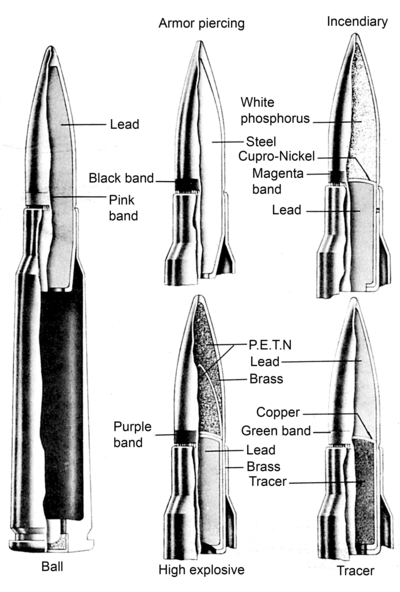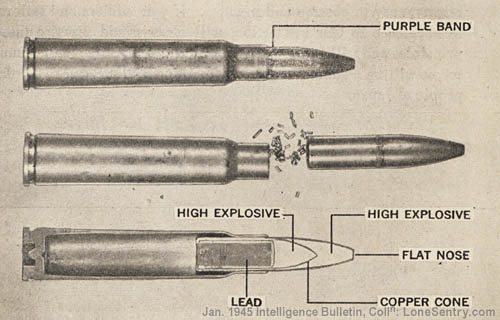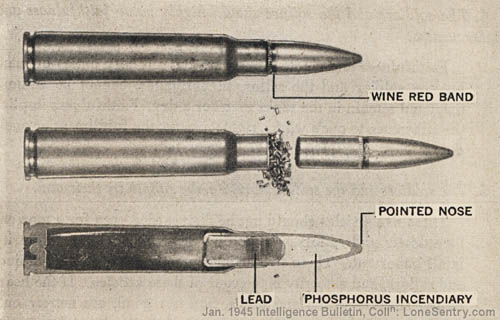The official Japanese service rifle was the 6.5×50 Type 30 that was adopted in 1897, right after the First Sino-Japanese War (25 July 1894 – 17 April 1895). This was in the move towards smokeless powder and the Type 30 was eventually replaced by the Type 38 in 1905, the actual title of the gun “Type 38” came from the fact that it was adopted in the 38th year of the reign of the Meiji Emperor. As time progressed, the Japanese found out that they were under-gunned in many departments with the 6.5 Arisaka. During the 1920’s they started experimenting with the 7.7x56R, which is nothing more than the Japanese version of the .303 British that was adopted by the Imperial Japanese Navy. During 1929 the Japanese Airforce developed a semi-rimmed version of the 7.7x56R but with a 2mm longer case. This cartridge was adopted by them in 1932, and was considered an ‘improvement’ over the Navy version for better extraction in machine guns. This cartridge was designated 7.7x58SR Type 89.
In 1932, the Type 92 cartridge was developed for the Japanese Army’s new land service machine-gun, using the same semi-rimmed case as the Type 89. This allowed the ammunition to be used in the Type 89, flexible/ fixed machine-guns and the Type 92 heavy machine-gun. It also allowed a range of special loads for both the Type 89 and the Type 92 to be used. These different loads required special markings, adopting a system of colored lacquer case mouth seals. The 7.7x58SR T92 was not interchangeable with the 7.7x56R Navy version. It can be summarised as follows:
7.7mm Type 89 SR Ball – adopted in 1929 for aircraft MG’s. It had a cupro-nickel 162gr flat-based bullet, pink case mouth seal and no primer markings.

 Early Type 89 with CN Jacket
Early Type 89 with CN Jacket
7.7mm Type 92 SR Ball – adopted in 1932 for the Army’s heavy machineguns, using exactly the same cartridge case as above but with a heavier boat-tailed 203gr bullet gilding metal-clad bullet, pink case mouth seal and no primer markings.
The Japanese Army also still utilised the 6,5 Arisaka as well and they had some eye watering experiences during the Second Sino-Japanese War in 1937 when they encountered the business end of the German 7.9×57 in China. This lead to the introduction of the 7.7×58 T99 during 1939, which was a rimless version of the T92 cartridge. The Japanese entered WW2 with three different 7.7mm cartridges – with the T99 being interchangeable with the T92, but not vice versa, and the Navy with their 303 version. It had to suck being a Japanese ordnance supply officer!
The types of 7.7x58SR ammunition utilized different case mouth seals as a way of identification:
Ball – Pink
Armor Piercing – Black
Tracer – Green
Explosive – Purple
Incendiary – Red




Type 92 Ball – Pink case mouth seal. The green primer colour on ball, armour-piercing and tracer Type 92 7.7x58SR cartridges was introduced about 1939 to differentiate them from the Type 99 7.7×58 rimless cartridges that entered service then.




Type 92 Armor Piercing – Black case mouth seal as used in the Type 92 heavy machinegun. Bullet jacket is actually brass but the core is steel – hence the magnetic attraction






Type 92 Tracer – Green case mouth seal. Cupro nickel, lead core, non-magnetic. If the CN jacket is magnetic it should be the Chinese reworked loads.




Type 92 Incendiary – Red/Magenta neck seal, with CN lead core and incendiary fill. According to Ken Elks, post-1939 7.7x58SR incendiary and explosive cartridges did not have green primers, as they were used exclusively in aircraft MGs and there was no possibility of confusion with the rimless Army round.


Blank




Dummy


